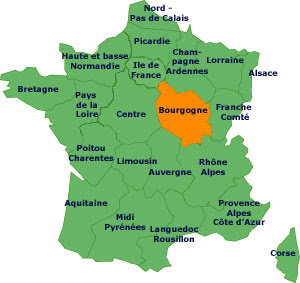Botrytis Cinera causes chemical changes which enhance aromas & flavors
The year was 1847.
California was not even a state yet and the Mexican-American War was full throttle. Across the Atlantic in France, however, the
Bordeaux region was enduring its own battle against a horrible fungus that
had destroyed their production of Sauternes wines. Vineyards lay in decay, a huge disaster of
rotting fruit covered with an invading army of organisms which had attacked the
grapes’ skins and caused them to dry and shrivel like raisins.
Chateau Yquem's location near the convergence of 2 rivers is perfect for Botrytis
Chateau Yquem, one of the top wineries of the time and the most prestigious producer of Sauternes today, decided
to pick some of its fruit, however, the quality was so bad that Yquem decided
not to release the wine for sale. Their entire
1847 vintage remained in Yquem’s cellar until 1859 when the brother of
Russia’s Czar visited the esteemed chateau.
This visit changed the course of history for Bordeaux’s sweet wine
industry.
The Russian monarchy and aristocracy of the 1800’s had
long been great admirers of Hungary’s sweet wines, Tokaj (Tokay). These very special sweet wines were like no
other sweet wines. While Hungary had been producing
these unique wines for 200 years, their production was limited. The wines were not produced every
year as their production was entirely weather dependent. As the demand of Russia’s
royalty was high, these special sweet wines commanded regal prices. When the Russian Grand
Duke visited Bordeaux in 1859 he heard the story of the grey fungus invasion
of 1847. A light bulb went off in his
head.
Liquid gold from Bordeaux's Chateau Yquem
The Grand Duke knew that the limited Hungarian sweet
wine of Tokaj was made only during the years of the Tokaj’s grey fungus. He asked to try Chateau Yquem’s 1847. The owner did not want to
offend him with this swill, but who could say no to the Czar’s brother? The rest is history. The Russian monarchy bought every single
bottle of Yquem’s 1847 vintage.
Wine-Knows enjoys a private tour & tasting at Chateau Yquem
The grey fungus responsible for all of this is now
referred to as the “Noble Rot.” Its technical
name is Botrytis Cinerea. Known simply as Botrytis, this organism
which has always been part of Hungary’s Tokaj region, has become a welcome visitor
to Bordeaux for the last 150 years.
Modern science now knows that Botrytis creates very unique sweet
wines. The Noble Rot not only dehydrates
the grapes into nearly raisins, but it actually changes the chemical composition
of the grape adding new enticing flavors and aromas.
Weather conditions must be perfect for the Noble Rot
to attack vineyards. Like any fungus,
Botrytis organisms thrive in damp, warm conditions. Both Bordeaux and Tokaj vineyards are located
alongside rivers. If there is river fog and
sun simultaneously during October-November when the grapes are already super ripe, this
creates the perfect storm for the Noble Rot.
Hungary's Tokaj wine district has idyllic conditions for Botrytis
If you’re coming with us next year on the
Austria-Hungary tour, you’ll experience some of these flavor bombs made from
Botyrtis in Hungary’s Tokay region. If
not, you’ll have to wait to 2021 when Wine-Knows conducts its tour to
Bordeaux.
Let's hope Botrytis is visiting both Hungary & Bordeaux this Fall!


















